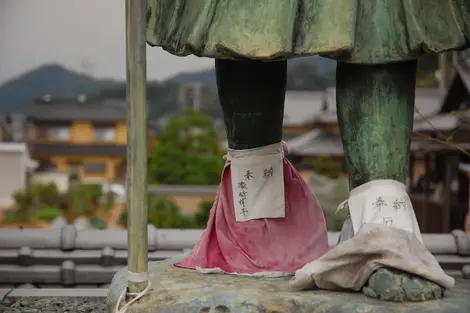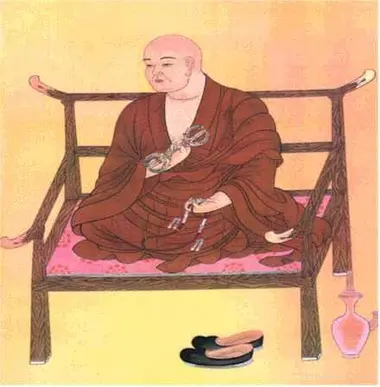Pilgrimage hikes in Japan 日本の巡礼
The pilgrim's staff in the land of the rising sun
The pilgrimage has been a popular exercise in Japan for many centuries. Initially, to pay homage to the deities of Buddhism and Shintoism and great monks such as Kukai, the paths are now popular with those who want to rediscover Japan's mystical side.
The pilgrimage is a very old Japanese tradition
The importance of pilgrimage in religious practice in Japan emerged with the growth of Buddhism in the country, especially from the Heian period (794 - 1185). This practice is centered around the mountains considered deities and where there are Buddhist temples, with the exception of the Shinto shrines of Ise and Kumano.
This is the time when the mythical En no gyoja would have climbed Mount Fuji for the first time (663) and when Kukai (also called Kobo Daishi) ascended Mount Koya to establish the spiritual heart of the Shingon sect.
During the following centuries, the practice of pilgrimage became more democratic, often under the aegis of a great leader. This was the case for the Kumano pilgrimage popularized by the emperors Go-Shirakawa and Go-Toba or the Bando pilgrimage created at the initiative of Yoritomo no Yoshimoto. Nowadays, these spiritual paths are the joy of visitors eager to rediscover a little of ancient Japan.
How to choose the right pilgrimage?
One of the great advantages of pilgrimages to Japan is their number and diversity. Each visitor can choose the path according to the region they want to visit, the time taken to complete the route and the degree of difficulty. Here are some suggestions for those who are finding it difficult to chose:
The one-day pilgrimage: a walk to Mount Koya. The pilgrimage to Mount Koya traces the ascent made by Shodo Daishi to reach the summit and establish his temple there. Nicknamed the "choishi michi" or path of stone markers, the 24 kilometers of trail can be completed in 6 or 7 hours. When you arrive at the top of Mt Koya, it is also possible to spend the night in one of the Buddhist temples!
The Kumano pilgrimage: the forest retreat. For those who would like to spend a few days completely immersed in the mystical atmosphere of Japanese pilgrimages, the Nakahechi path of the Kumano pilgrimage is ideal. The 4 or 5 days trail through the Kii peninsula, its old pines and isolated mountain villages offer some beautiful scenery.
The pilgrimage of Shikoku: For those staying in Japan for a longer period. For those who would like to take the time to enjoy Japan, head to the Shikoku pilgrimage. With its 88 temples located all around the island, it takes between 40 and 60 days on foot to complete this major path. This is the opportunity to walk and interact with the Japanese, discovering off the beaten track Japan.

Forests on the paths of Kumano Kodo, Kii Peninsula
JNTO
Don't forget the outfit!
To make a pilgrimage requires to be well equipped. Beyond the essentials for any long walk (good shoes, food, drinks ...), it will be necessary to equip yourself with a tent for those who do not wish to sleep in the hostels in the area. Even though the risk is minimal, taking a bear bell with you is a precaution that you should take.
And to fully immerse yourself in the pilgrimage, it is possible to don the traditional attire of the pilgrims. This is especially the case for the pilgrimage of Shikoku, whose “ henro” (names given to pilgrims) are easily recognizable.
Dressed in a " hakui" (white jacket), a "wagesa" stole and wearing their "sugegase" (the conical hat), they walk stick in hand around the island. To get this equipment, you just have to go to the first temple of the circuit, the Ryozen-ji, where it is sold.





















